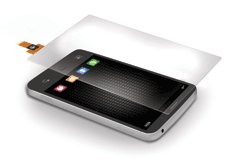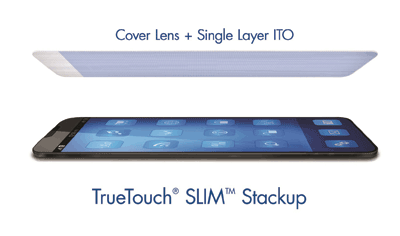Product Marketing Engineer
Cypress Semiconductor
www.cypress.com
Three touch-sensing IC trends for 2013
As 2012 winds down, we begin looking to the year ahead and what changes the market might bring for touch ICs. This year saw big strides in capacitive touch devices and features. So what happened in the market last year, and how might it evolve in 2013?
The year 2012 saw significant growth in the capacitive touchscreen market, mostly in mobile devices. More applications replaced resistive touch with projected capacitive sensing. Capacitive touch benefits include multitouch and higher-resolution display support. Consumer adoption of capacitive smartphones grew rapidly in the last year, and, according to industry analysts (Touch Screens in Mobile Devices, Global Industry Analysts, Inc., July 2012), smartphones are expected to have the fastest growth rate of all touchscreen devices over the next five years.

That’s where the market is trending, but what about the devices themselves? These are some of the predicted trends:
Reducing noise
It’s not new, but noise in a touchscreen system remains a major concern. Designing a noise-resistant system is very challenging. Chargers inject high noise levels that significantly impact performance if a user tries to operate the device while plugged in. Touchscreen displays are also inherently noisy. The growing use of display integrated designs, such as in-cell, brings the sensor even closer to the disruptive panel. Until displays and chargers generate less noise, the solution lies with the touchscreen controller.
Touch controller performance in noise is based on signal-to-noise ratio (SNR). You can improve SNR one of two ways: increase signal or reduce existing noise. A controller that delivers high-voltage Tx, such as the 10 V Tx available from the Cypress TrueTouch solution, increases signal to minimize the impact of existing noise.
Controller manufacturers are also developing technology to reduce existing noise, such as Charger Armor from Cypress. Charger Armor uses several techniques including adaptive frequency hopping to achieve charger noise immunity of up to 95 Vp-p.
Sleeker designs
Another trend is the push toward sleeker designs. People don’t want to carry around bulky devices — they want something thin, light, and sexy. That’s not always an easy task when a device requires a certain amount of space for internal components. A trend toward single-layer sensors reduces the thickness of the device while still providing multitouch functionality.
Many manufacturers also want to increase display size without increasing device size by reducing bezel space. This provides a double benefit: It makes the product more attractive to the consumer, and lowers manufacturing costs by reducing the materials required to build it. Solutions like Cypress’s SLIM sensor give manufacturers an easy way to do both.
SLIM lets OEMs halve the height of their stackups, and reduce or eliminate side bezels in handsets. Reducing the bezel requirement enables larger displays that make browsing, gaming, and similar activities easier, without increasing size. This kind of innovation points the way to a new era in devices.

TrueTouch SLIM Stackup
Waterproofing capability
The third trend is waterproofing capability. Our touchscreen devices, especially our mobile phones, have turned into go-everywhere accessories. We take them to the gym, the great outdoors, the kitchen — places where they’re likely to come into contact with moisture.
Water is a natural enemy of touchscreen devices. It acts like a conductor on the screen, disrupting the capacitive touch technology and resulting in slow response times, inaccurate performance, or even a total freeze of the touchscreen. This is unacceptable to the market. Users expect flawless operation no matter where their device goes.
Instead of relying on extra protective layers or expensive coatings, OEMs are looking for more creative solutions to the problem of water on the screen. Cypress has proprietary technology that enables simultaneous self and mutual capacitance scanning, allowing a built-in waterproofing solution that mutual capacitance-only controllers cannot provide. ■
Advertisement
Learn more about Cypress Semiconductor





